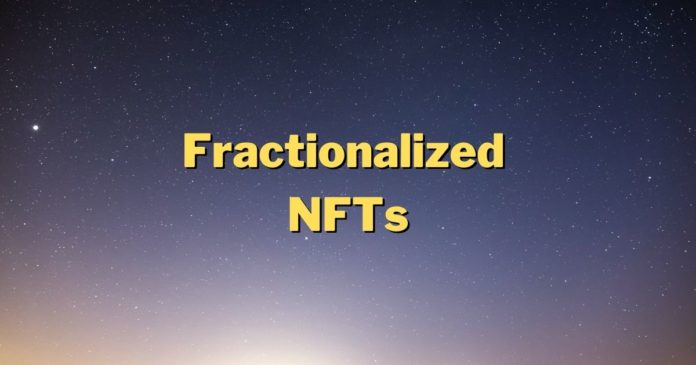Non-Fungible Token (NFT) unsophistication, elements of fun, and attendant market depth are making the broader NFT space expand immensely.
However, one unique quality which at the same time is a limitation is the difficulty to exchange NFTs.
As such, this ‘positive’ shortcoming is the reason they are so difficult to price.
To counter the seeming disadvantage of the non-fungible assets, various initiatives have started making the waves of fractionalizing the NFTs.
When this comes into effect, collectors of the tokens will be guaranteed partial ownership rights.
What Do Fractionalized NFTs Entail?
Fractionalizing NFTs summarily makes it more liquid. In case you don’t know, liquidity in cryptocurrency is a unique quality, making the conversion of a coin into cash, or its equivalents possible. This unique quality is so indispensable for all assets tradable, including cryptocurrencies. Low liquidity levels define that market volatility is active, causing surges in cryptocurrency values.
The development of the fractionalized NFT is geared towards liquidity. Through this initiative, tokenized fractional shares can be minted for NFT ownership.
Similarly, a report on the project has it that through the new fractional initiative, holders of tokens can gain some liquidity from their assets without putting up the entire piece for sale.
At this point, the necessary technologies also help users to fractionalize the whole collection of NFTs. The new project will launch under the umbrella of shared ownership tokens, a revolutionary operation driven to empower inexperienced, and upcoming investors to invest in the digital art amassed by the most prominent collectors.
The Fractional project functions with NFT vaults; one which, by taking custody of the full piece, enables the holders to break it apart. NFT Vaults – just like their crypto counterparts – are used like regular physical wallets to store NFT assets.
With this, they can also forward the ERC-20 parts to friends, auction them off, or use them for liquidity provision.
When the process is completed, the auction winner will receive the NFT, and token holders will be able to claim the ETH paid. The protocol is yet to reveal the time frame for the launching of the revolutionary project.
F-NFTs Projects and Briefing
Projects that fractionalize (break apart) NFTs are gaining interest following a number of ground-breaking sales beyond the reach of most investors.
Four notable projects tackling the issue of fractionalizing NFTs include Unicly, Niftex, NFTX, and NFT20.
- Unicly is to some extent a debutante in the NFT industry. Using this application, users can lock a collection of NFTs through it to offer fungible share tokens named uTokens. uToken basically represents ownership of the NFT collection. uToken has governance rights over the collection, such as deciding which NFTs can be included in the collection. Unicly supports different types of NFTs, making the structure similar to an NFT fund.
- Niftex is one of the earliest fractional Nifty platforms. Before the NFT came into the recent public hype, Nitftex had come into existence in 2020. Similar to Unicly, it allows users to mint fractionalized NFTs that can be called shards.
- NFTX, as against Unicly and Niftex mode of operation, does not facilitate the sharding of personal NFT. NFTX centers on building funds for NFTs with the same value. Through this it helped to create a price floor for the NFT project. NFTX is of two forms; D1 funds, and D2 Funds.
- NFT20 is also an NFT index fund provider with a governance token termed MUSE. Just like the NFTX, this fund provider funds only support similarly priced NFTs that come from the same project.
There are two ways of offering NFT for sale on the NFT20 platform, which is normal minting, and Dutch auction.
F-NFT Future
F-NFT has come about as a result of the fact that many NFTs are selling for significant amounts of money (in both fiat and digital currencies). As such, the idea of fractionalization is driven to allow smaller investors to pool resources to purchase fractional interests of an NFT. However, there are a lot of debates about the future of the NFT market and where it’s headed.
One narrative posits that the NFT market was in a bubble and the bubble just burst, or at least cooled off, following the fall in the prices of digital collectibles in recent times.
Like the Bitcoin rise being checked by heavy volleys of regulations, the F-NFTs may be hit by the same in the future as NFT continues to rise. The US Securities & Exchange Commission (SEC) commissioner, Hester Pierce, for instance, has already handled a case of illegality against it. Pierce warned that issuing fractionalized NFTs could be considered investment contracts under the country’s securities law.
Also, join us on Telegram to receive free trading signals.
Find out more about the blockchain and crypto space on the Altcoin Buzz YouTube channel.




























